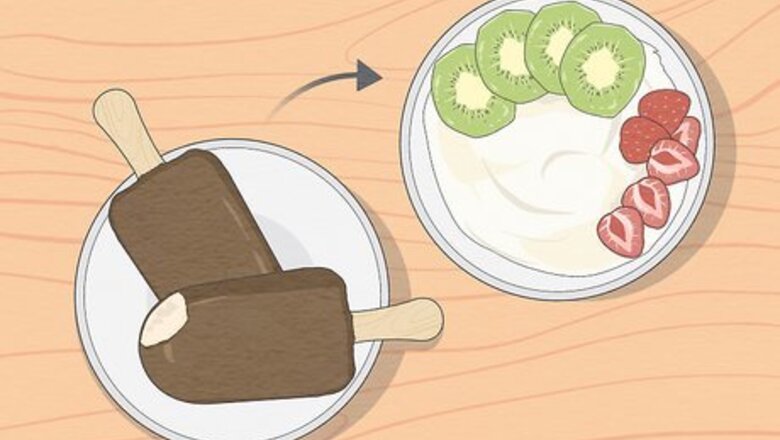
views
- Running, cycling, jumping rope, and doing lunges and squats are all great ways to lose knee fat and tone your legs.
- Eat fewer calories than you burn every day to lose weight overall. Replace high-calorie foods with healthy low-calorie ones.
- For immediate results, talk to a cosmetic surgeon about fat freezing or liposuction.
Maintain a calorie deficit.
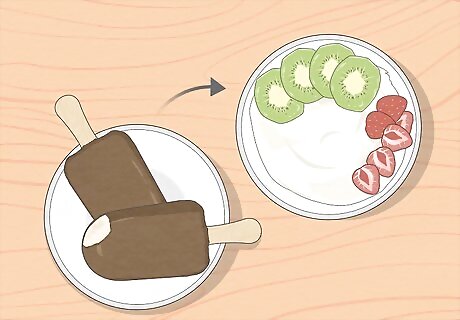
Lose body fat by eating fewer calories than you burn. Since you can’t specifically target knee fat, reducing overall body fat is a good method to also reduce fat around your knees, and that is usually attained through nutrition. To maintain a calorie deficit, you can either consume fewer calories than you normally would or increase activity and exercise to burn more calories. Replace foods that are high in calories and low in nutritional value with healthier options. For example, if you’re craving a sweet treat like a chocolate ice cream bar, try eating some reduced-fat flavored yogurt instead, which is lower in calories and better for your body. Swap high-calorie foods for low-calorie foods to lower your calorie intake without changing the types of food you eat. Reach for a diet soda instead of a full-calorie one, or choose baked or fat-free potato chips instead of regular fried ones. Cut portion sizes and eat smaller meals if you don’t want to make any adjustments to the foods you enjoy.
Go for daily walks.
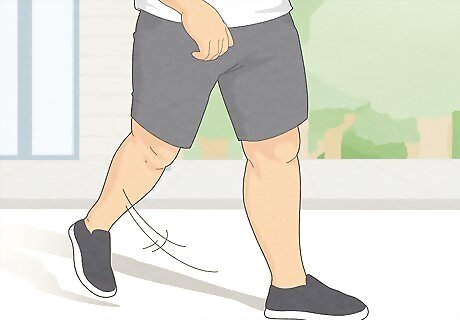
Going for a walk at a moderate-to-brisk pace can help you lose body fat. If you’re looking to maintain a calorie deficit but don’t want to change your diet, incorporating walking into your daily routine can help burn excess calories. Just 30 minutes of brisk walking a day can burn up to 150 calories, making it a great exercise for general fat loss without having to go to a gym. If you’re new to exercising, it can be easy to over-exert yourself. To avoid injury and burnout, begin with a pace that feels comfortable and slowly increase the speed and distance of your walks.
Start running.
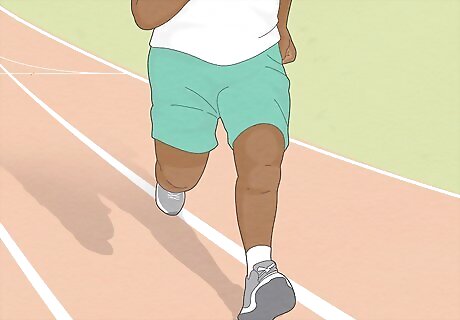
Running is another aerobic exercise that can decrease overall body fat. It is a more intense activity that works your legs a bit harder than walking, which may be beneficial for increased fat loss in the legs and knees. Going for a run at a pace of 5mph can burn 600 calories in one hour! Studies show that short intervals of running may be more effective for fat loss than long-distance runs. Consider incorporating interval training into your exercise routine by walking at a brisk pace for longer periods of time, running for a shorter period of time, then returning to your walking pace.
Ride a bike.
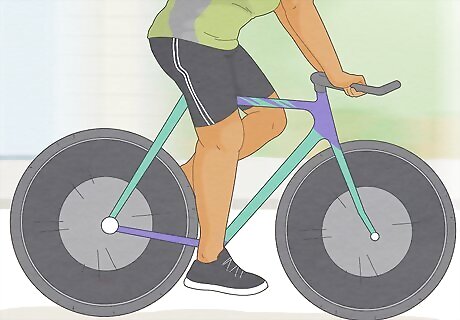
Going for a bike ride can work your legs and burn body fat. One hour of biking at a moderate speed can burn nearly 300 calories. If you experience any leg or knee pain, biking can be a great alternative to walking and running since it places less pressure on your knees and joints. If your leg or knee pain causes you to have issues with balance, then walking may be a more suitable option than riding a bike, since poor balance could lead to injury.
Jump rope.
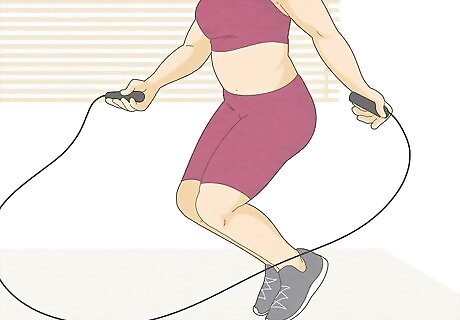
Jumping rope can help you lose fat and tone muscles. You can’t spot reduce knee fat, but you can strengthen your leg muscles to achieve a more toned look that reduces the appearance of knee fat. Jumping rope combines the weight loss benefits of cardio with the muscle toning power of strength training exercises. Plus, once you’ve purchased a jump rope, this is another free exercise that you can perform virtually anywhere that has enough overhead space! Jumping rope is a great exercise to add to your weekly training routine, but it is important to listen to your body. If your joints don't feel great over time — ankles, knees, hips, and back, more specifically —, you might want to decrease the volume of the exercise.
Try lunges.
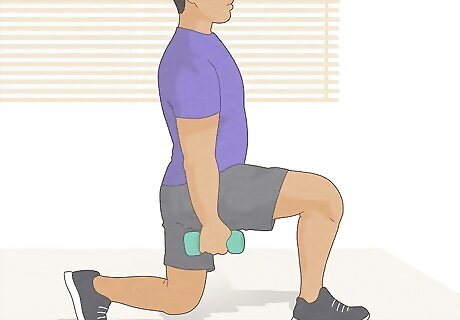
Performing lunges can strengthen the muscles in your legs. Over time, strengthening your leg muscles will create a more toned appearance that can include a decrease in leg and knee fat. To do a lunge, stand with your feet shoulder-length apart. You can place your hands on your hips or hold them together in front of you. Step about 2 feet forward with one foot. Keep your upper body upright and bend both knees so there is a 90° bend in your front leg. Engage your leg muscles to push your body back to its starting position. Repeat with the other leg. For added intensity and strength training, hold a weight or dumbbell in each hand as you perform the squat. Let the weights hang heavy in your hands and keep your arms on either side of your body.
Start squatting.
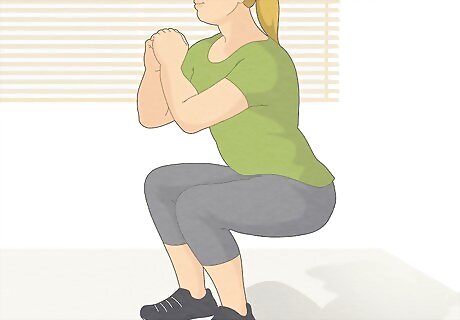
Doing squats can tone your quadriceps and calves. Since these muscle groups are above and below your knees, respectively, toning them with strength training is a great way to reduce the appearance of leg and knee fat. To perform a squat, begin with both feet shoulder-width apart. Place your hands at your sides or hold them together in front of you. Bend your knees at a 90° angle as if you were sitting down in a chair. Keep your back straight and be sure to not let your knees bend in front of your ankles. To add intensity, place a resistance band around your thighs to target your quadriceps.
Perform step ups.
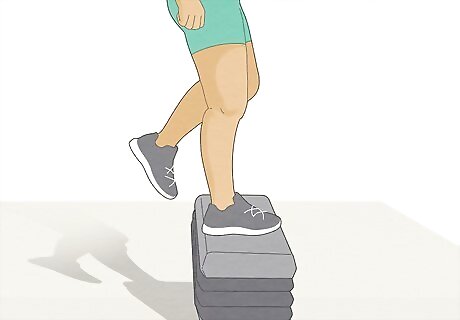
Step-ups are an exercise you can perform at home to improve muscle tone. This one-leg strength-building exercise can improve balance and strengthen your quadriceps and calves, making it a great way to reduce the appearance of knee fat and tone your legs. To do a step up, begin by finding a stair, step stool, or another object you can use to step on. Be sure your space is clear from any obstacles or movement so you won't fall or lose your balance. Keep your hands on your hips for balance and step onto the stair. Place your weight on your front foot and push through. You should feel your back foot lift off the ground. Press down through your front foot to fully extend your leg. Slowly lower your back foot to the ground and repeat with your other leg.
Consider cryolipolysis.
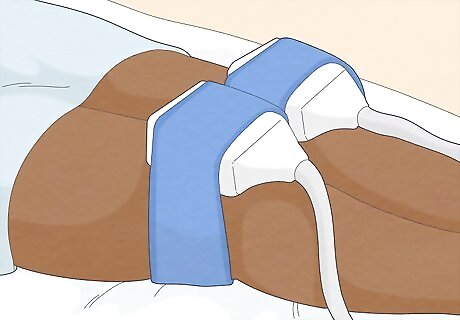
If your fat does not respond to diet or exercise, consider freezing it away. Cryolipolysis is a non-invasive fat freezing procedure that uses cold temperatures to destroy fat cells in stubborn fat deposits. Since cryolipolysis is only recommended for people in good health who want to spot reduce fat, it’s an ideal option for specifically targeting knee fat. Find a plastic or cosmetic surgeon in your area to learn more about cryolipolysis procedures. Research shows that it takes multiple sessions over the course of two months to see a dramatic improvement in fat reduction. On average, a cryolipolysis procedure ranges from $2,000 to $4,000 depending on your specific treatment. Health insurance is not likely to cover these costs.
Get liposuction.
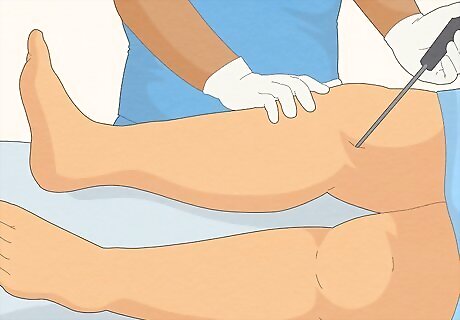
Surgical procedures like liposuction can permanently remove fat deposits. Liposuction is a minimally invasive procedure performed by a plastic or cosmetic surgeon that removes fat to create a smoother body shape. The results are much quicker than changing your diet or exercise habits and leave only small scars from minor incisions. Talk to a plastic or cosmetic surgeon if you are interested in liposuction. The typical liposuction procedure costs a few thousand dollars and is not likely to be covered by health insurance. Liposuction will not remove skin texture associated with fat, like cellulite or excess skin, nor will it prevent future body fat gain.
Get excess skin removed.
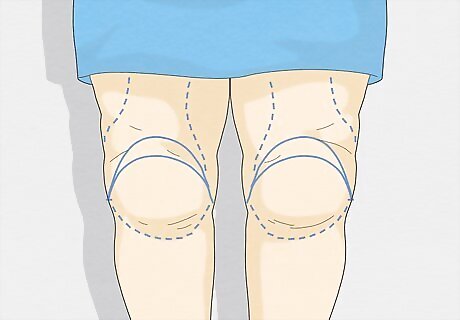
Remove excess skin to reduce the appearance of fat. If you’ve lost a large amount of fat over a short period of time, you may have excess skin around your knees that draws attention to your leg fat. Excess skin removal is a body contouring procedure that removes skin folds to achieve a certain aesthetic, but it is not a fat or weight loss procedure. Excess skin removal is a major procedure that is likely to result in scarring and pain for up to a few weeks. It may take up to two years to see the full body contouring results.














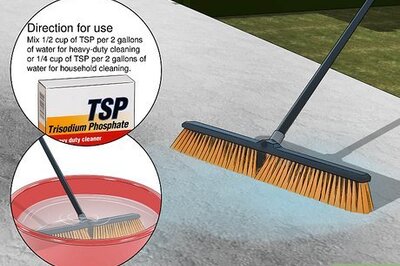

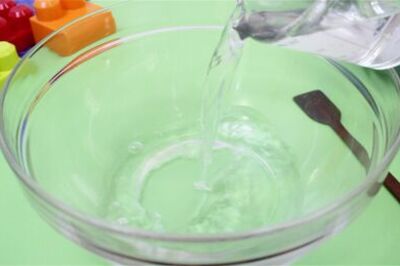
Comments
0 comment